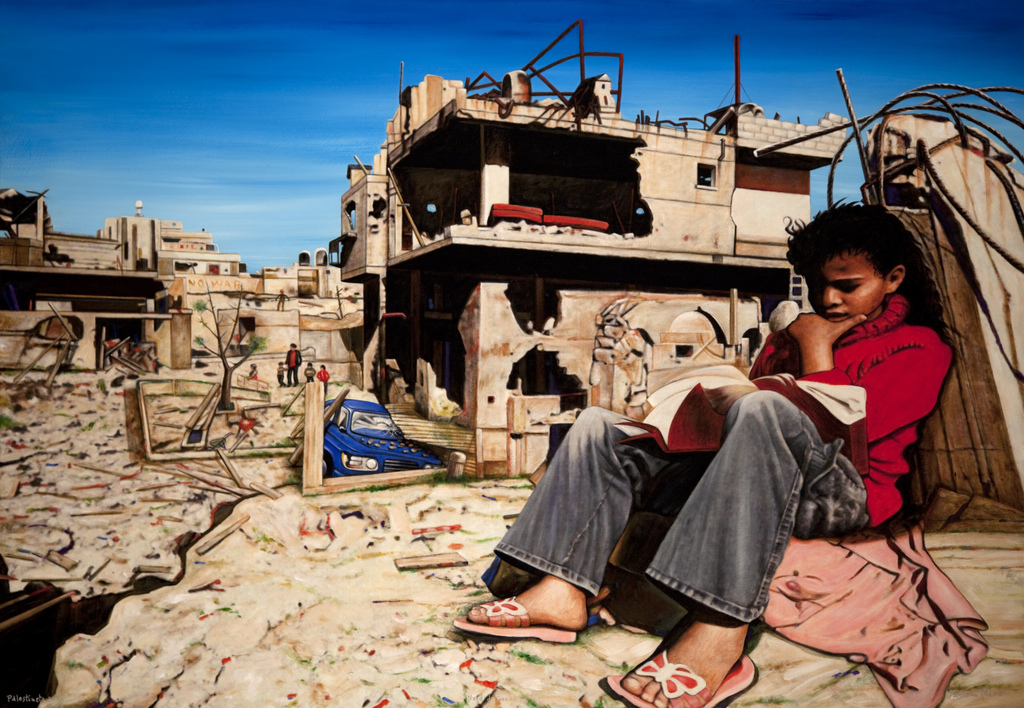Palestineta (Palestinian girl)
The seemingly endless Palestinian-Israeli conflict makes it seem timeless. Several generations have lived their lives against the background of this conflict. At the beginning of ‘The Arab Spring’, the Northern Gaza Strip was again brutally attacked by Israel. Strange as it may seem, this scene of destruction can be bound up with wishful thinking, as a girl reads avidly to learn and to escape her surroundings.
‘NO WAR’ is scrawled on a wall in the background, contrasting with the affirmation of education and culture symbolised by the young reader. The rest of the picture shows the ruins of a bombed city. There is a shattered building under a bright blue sky. The blue car and the red armchairs are vestiges of a vanished past life. Just like the demolished pillar on which the girl sits, everything useful and solid ends up being useless and proves to be highly fragile in the face of barbarism.
The huge task of changing this sorry state of affairs for the better can only be tackled through education. This is the dialectic espoused by Antoni Miró in the painting. Moreover, he establishes a linguistic distinction in what affects the degree of faithfulness to reality. The detail with which the main figure is shown fades around her and as the viewer’s gaze moves towards the background.
That distinction only strengthens the main idea. The contrast between the hyper-realism used to paint the girl — the protagonist of the work, who seems unaware of the ruin around her — and the treatment of the ground on which she sits seeks to highlight this figure, which occupies the foreground over the rest.
The artist denounces the oppression of the Palestinian people with his painting, and at the same time places hope in those who will be the women and men of the future. This painting acts as a “mirror for reflection”, as that which De Santi mentioned in the seventies: a tool for raising awareness of “the obsessive, repeated theme of violence”. Yet now, unlike four decades ago, it also expresses a sliver of hope “by appealing to the viewer’s emotions”. Moving the beholder is one of the historical functions of art and, in Romà de la Calle’s view, Antoni Miró wants to do so.
Santiago Pastor Vila
